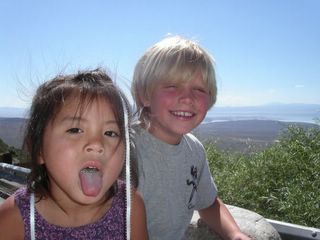Chiang Mai Wats

From our window on the fourth floor of the Na Inn, a large, old, crumbled brick Chedi
 y the Mae Ping River and this was to be, and remains, the center for commerce and industry. The Western part of the city was relatively forested. This was to be the place for monks and meditation and to be the educational section of the city. It is in this direction that the large Chiang Mai University and other Universities lie today. In addition, Wats were established at the edge of the old city at each of the eight cardinal points from Chedi Luang in a system known as “thaksamuang.” The combined nine wats are im
y the Mae Ping River and this was to be, and remains, the center for commerce and industry. The Western part of the city was relatively forested. This was to be the place for monks and meditation and to be the educational section of the city. It is in this direction that the large Chiang Mai University and other Universities lie today. In addition, Wats were established at the edge of the old city at each of the eight cardinal points from Chedi Luang in a system known as “thaksamuang.” The combined nine wats are im portant because, as you probably know, nine is an auspicious number.
portant because, as you probably know, nine is an auspicious number.
There are, however, many more wats than nine in Chiang Mai. There are apparently as many wats in Chiang Mai as there are in all of Bangkok. Indeed, it is very hard to walk in any direction for long without passing a wat or a group of saffron-robed monks. I see many monks in the morning when I head out for my run as this is the time of day they circulate with their silver offering bowls. Thais offer food to the monks in order to gain “merit” in their reincarnation-path toward enlightenment. It is apparently important that the emphasis is on the donation of the food rather than its receipt by the particular monk. For instance, a monk may give a blessing to the donor, but would never give a personal “thank you.” Anyway, the abundance of Wats certainly adds to the color and vibrancy of the city.
One thing we’ve enjoyed in Chiang Mai is visiting the Wat’s for the English language lectures and the “monk chat” times when we can ask questions of the monks and the monks can practice their English.
The most important Wat in Chiang Mai is Wat Doi Suthep, on the mountain overlooking the city. We can see the lights of the Wat from our hotel and have driven up the mountain to the Wat on our scooter. This is apparently the second most holy site in Thailand and the temple is quite opulent. On our first  visit, we entered the main temple and kneeled down, admiring the detailed paintings on the wall, noting the large number of clocks, counting the many Buddha statues in the hall (35+?) when a wizened old monk who had been sitting on the side of the temple began chanting and then dipped a split bamboo
visit, we entered the main temple and kneeled down, admiring the detailed paintings on the wall, noting the large number of clocks, counting the many Buddha statues in the hall (35+?) when a wizened old monk who had been sitting on the side of the temple began chanting and then dipped a split bamboo stick into some water and splashed it on the group of us clustered in front of the main altar. He then began tying small lengths of white string onto the wrists of the supplicants. An assistant tied string to the wrists of the women present as monks are not allowed to touch women directly. As the string was tied, a little prayer or comment was offered from the monk. However, when I reached the monk, he took one look at me and set to work with renewed vigor. He began chanting loudly and repeatedly splashed the holy water ont
stick into some water and splashed it on the group of us clustered in front of the main altar. He then began tying small lengths of white string onto the wrists of the supplicants. An assistant tied string to the wrists of the women present as monks are not allowed to touch women directly. As the string was tied, a little prayer or comment was offered from the monk. However, when I reached the monk, he took one look at me and set to work with renewed vigor. He began chanting loudly and repeatedly splashed the holy water ont o my back with the branch as I bowed before him. At some point he seemed satisfied, or at least resigned to the limitations of what he had to work with, and tied a piece of white string on my right wrist before sending me on my way.
o my back with the branch as I bowed before him. At some point he seemed satisfied, or at least resigned to the limitations of what he had to work with, and tied a piece of white string on my right wrist before sending me on my way.


0 Comments:
Post a Comment
<< Home